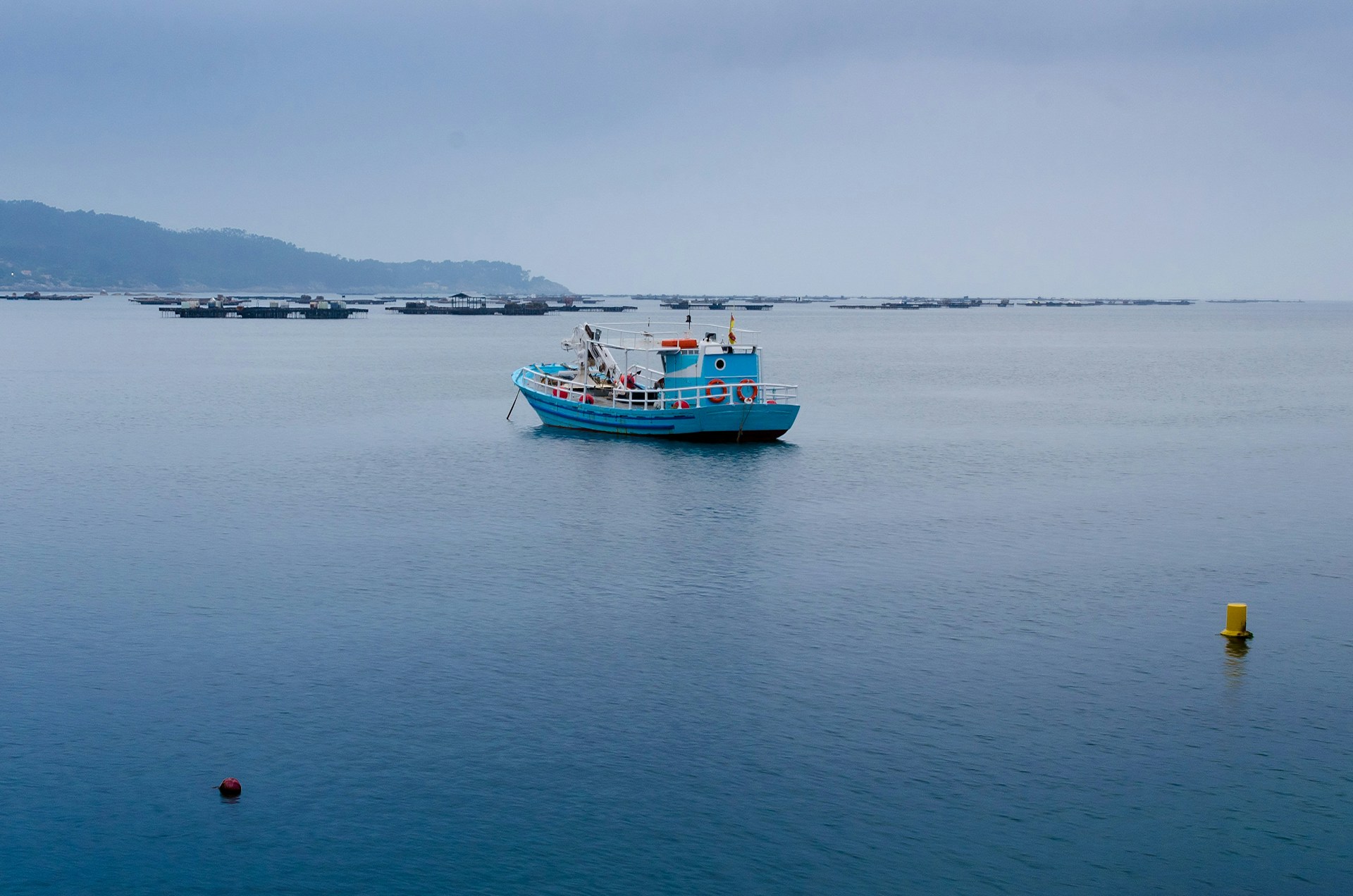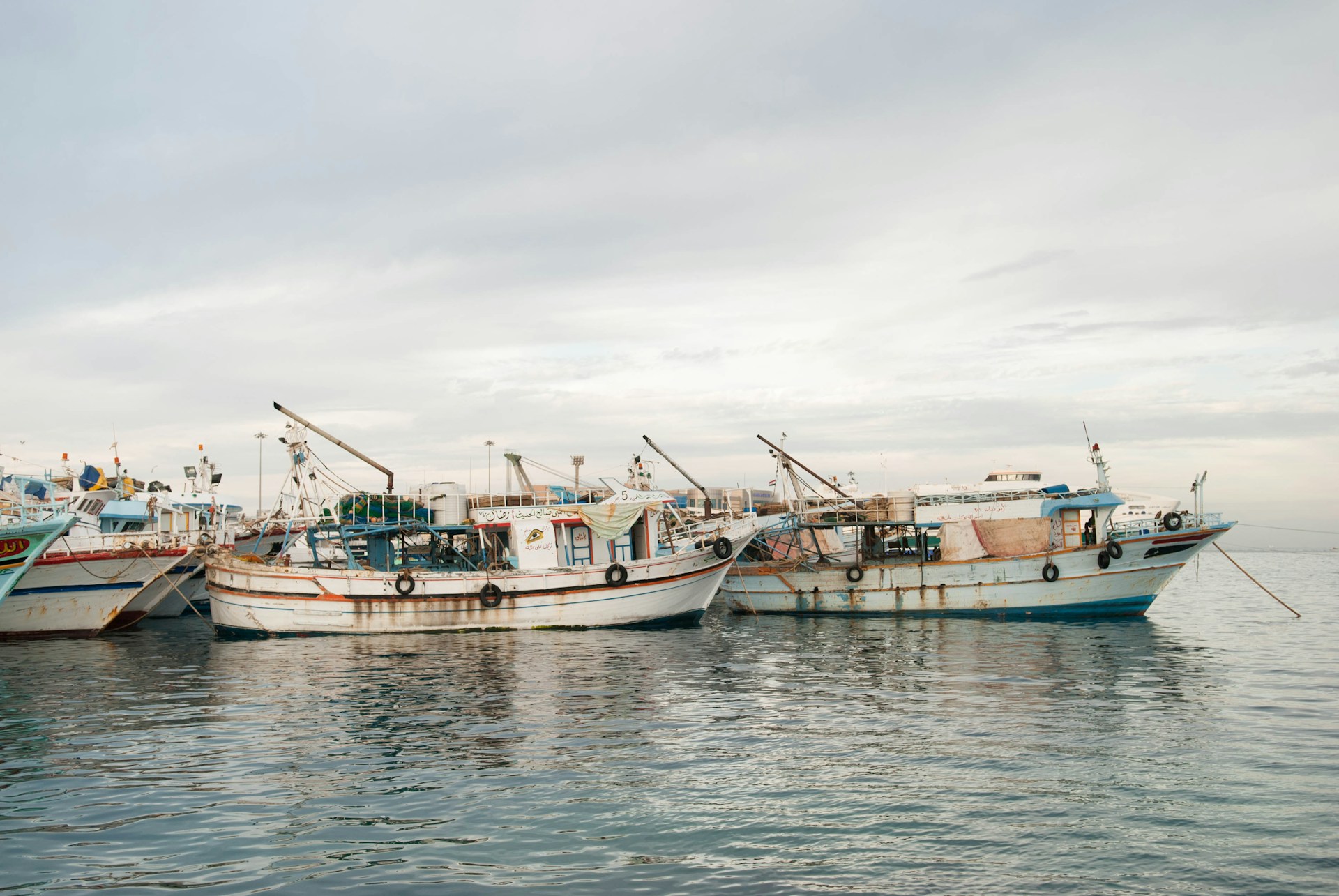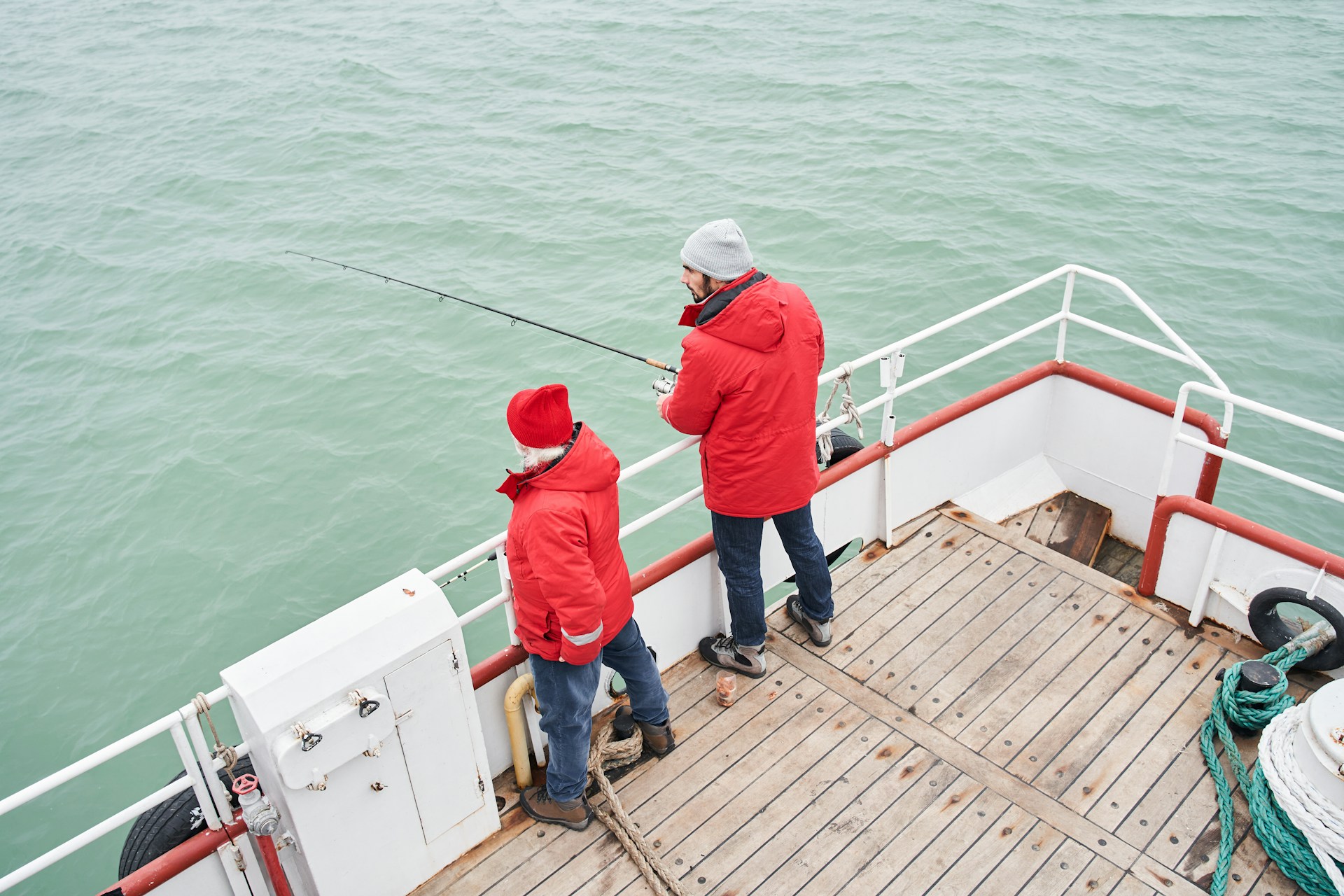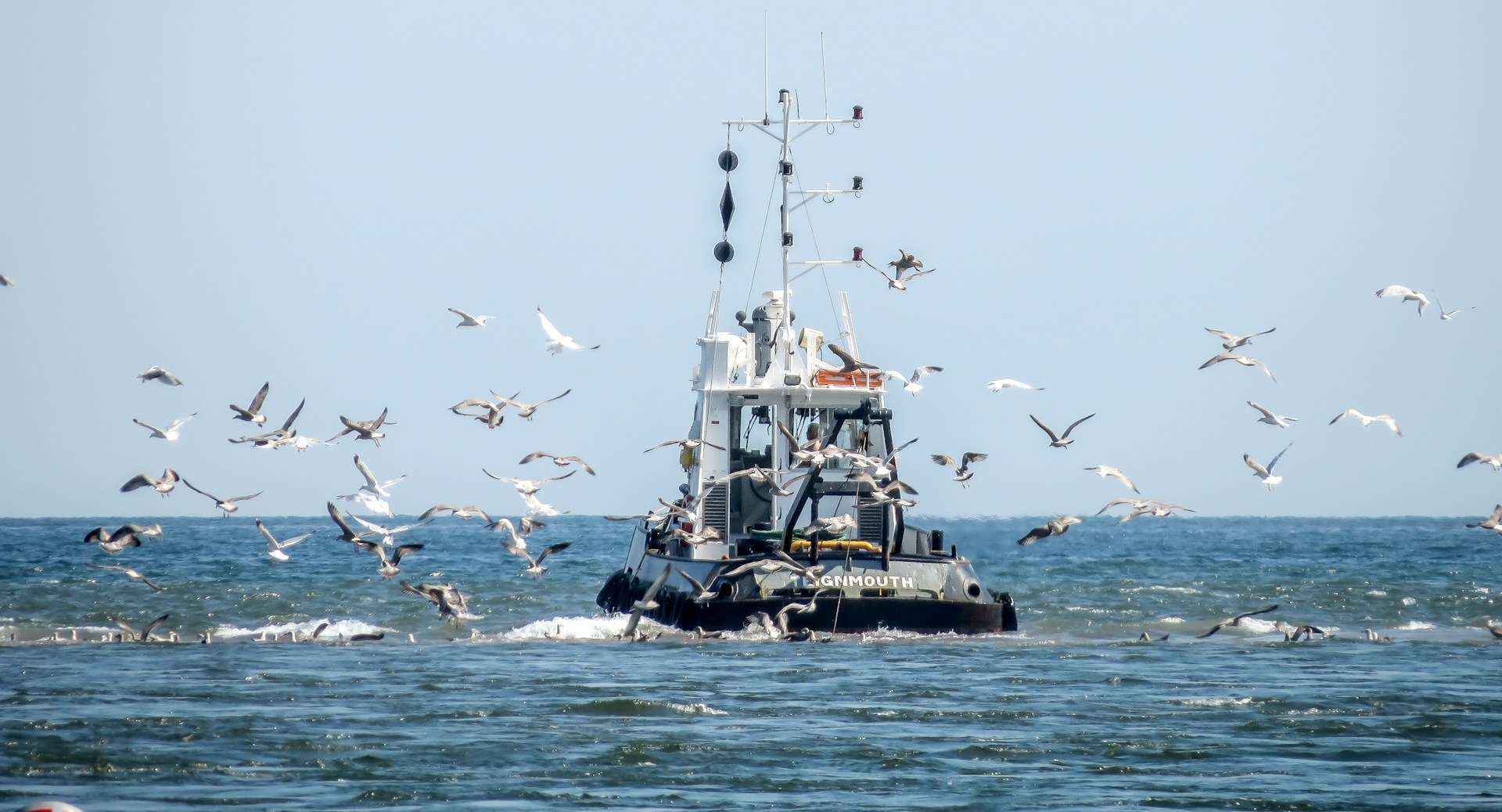We all know that a fishing vessel is a boat that is used to catch fish, whether that’s on the sea, a lake or a river. It goes without saying that fishing boats vary in size and complexity, but what you might not know is that they can be broken down into a number of main categories and then subcategories.
Commercial fishing vessels are also categorized as part of the merchant fleet, as just like cargo and container ships, car carriers, bulk carriers, oil tankers, passenger ferries and gas carriers they work for a living.
But now, if you’ve ever wanted to know more about fishing vessels, here’s your chance!
What are some different types of fishing vessels?
To start with, fishing vessels can be split into three main types depending on their purpose. These are:
- Commercial fishing vessels
- Artisanal fishing vessels
- Recreational fishing vessels
And they can also be classified depending on their size or length:
- Small: Small fishing vessels operate in freshwater
- Medium: Medium sized fishing vessels operate in Exclusive Economic Zones (EEZ)
- Large: Large fishing ships operate on the ocean
And they can also be broken down into subcategories depending on the type of gear onboard that is used to catch fish and seafood. These are:
- Trawlers
- Dredgers
- Seiners
- Trap Setters
- Gillnetters
- Lift Netters
- Liners
- Vessels that Use Pumps
We’ll take a closer look at all of these different types of fishing vessels later on.
Read more: Everything You Need to Know About RoRo Ships

The history of the fishing vessel
The act of fishing as a source for food has been around for almost as long as humans, and needless to say once vessels started to be used for fishing, the design changed radically over the years.
ARE YOU LOOKING FOR JOBS ON FISHING VESSELS? VIEW MARTIDE’S FISHING VESSEL JOBS NOW!
The earliest known watercraft were, of course, very basic and were used for everything from transportation and exploration to war. The biggest advancement in the burgeoning fishing industry was when the Dutch invented the herring drifter in the 15th century.
This became the basis on which European fishing boats were subsequently built for some time, with the British developing the dogger - a predecessor of the trawler - in the 17th century.
The trawler as we now more or less know it was also a British development, seeing the light of day in the 19th century.
It wasn’t long after this that the advent of steam for use as a means of propulsion was applied to trawlers, rapidly changing the face of fishing across the globe.
Read more: Everything You Need to Know About Feeder Vessels
With more than just manpower behind the wheel, the steam trawlers could be built to a bigger spec and could therefore carry more nets and bigger catches, and travel further and faster.
Turbines and diesel engines were not far behind, propelling the fishing industry to new heights.
Now let’s take a closer look at the subcategories of fishing ships, starting with fishing boats broken down into purpose.

Read more: Everything You Need to Know About Cable Laying Ships
Categories of fishing vessels according to purpose
Commercial fishing vessels
A commercial fishing vessel is a mid- to large size boat that is used to catch fish and other seafood for wholesale selling on a large scale.
These types of vessels are able to operate far from shore in deep water, even in rough seas and inclement weather. Commercial fishing vessels are governed by IMO regulations regarding the design of the boat, its size, and the equipment it uses.
Read more: Everything You Need to Know About Icebreaker Ships
Artisanal fishing vessels
Also known as subsistence fishing, this is the term given to boats that are used to catch fish for wholesale to local markets and restaurants. The boats are small to medium sized and may or may not have an engine.
ARE YOU LOOKING FOR JOBS ON FISHING VESSELS? VIEW MARTIDE’S FISHING VESSEL JOBS NOW!
Recreational fishing vessels
As the name suggests, recreational fishing boats are watercraft that individuals or small groups of people use to catch fish as a sport or hobby.
The fish are usually released back into the water or perhaps taken home to eat, but they won’t be sold for commercial purposes. These boats are on the small to medium sized end of the scale.
Read more: Everything You Need to Know About Tugboats
Now we’ve got the three different categories of fishing vessel, let’s break them down into actual types. We’re going to focus on commercial fishing ships as these come in many different shapes and sizes, whilst artisanal and recreational fishing boats are not part of the merchant fleet.

Read more: Everything You Need to Know About Lightships
Different types of fishing vessels and their characteristics
Trawlers
The most commonly used type of commercial fishing boat, the trawler is used across the globe and uses cone-shaped or funnel trawls (nets) to catch fish. They are equipped with mechanical devices called trawl winches which are used to haul the net over the side or stern of the boat and on board.
Trawlers need to have powerful engines to give them the ability to tow nets full of their catch over long distances.
There are also different types of trawlers:
- Stern trawlers: A large, powerful boat that hauls the trawl nets over the stern using trawl winches and net drums. The handling and processing of the catch is often done onboard.
- Side trawlers: As the name suggests, the trawl nets are hauled over the side of the boat, normally using trawl winches. Side trawlers are now less popular than stern trawlers.
- Factory trawlers: These large boats have a processing facility onboard and can process the fish into filets or mince onboard.
- Freezer trawlers: These boats have refrigeration facilities for storing the fish in until the boat reaches land.
- Wet-fish trawlers: These boats operate closer to the shore as they do not have refrigeration facilities and instead keep the freshly caught fish in ice or in the insulated hold of the boat.
- Outrigger trawlers: Also known as beam trawlers thanks to the two nets which are towed by the booms that extend from either side of the boat, these are used mostly for catching shrimp.

Read more: Everything You Need to Know About Heavy Lift Vessels
Lift netters
A lift netter has large trawls which are held out from the side of the boat and raised and lowered using outriggers. The vessel is equipped with winches and derricks which lift these outriggers as well as the lines and booms.
Trap setters
Used to catch seafood such as crayfish, crabs and lobster, these vessels come with traps and pots to snare their catch which will then be stored in the hold. Larger trap setters will use davits or derricks to set and haul the pots. You may also hear of these fishing boats referred to as ‘crabbers’.
Read more: Everything You Need to Know About Mining Ships
Seiners
Seiners use a particular type of net called a seine net. These hang vertically in the water and have long wings and tow lines.
The top edges are buoyed by flats and the bottom part is held down by weights. Seiners catch pelagic fish - fish that swim in the water column, i.e. not close to the shore or the bottom of the seabed. Pelagic fish include sardines, herrings and tuna.
Drifters
As we mentioned earlier in the history of fishing boats, the Dutch invented the herring drifter in the 15th century - and they are still in use today. Drifter type fishing boats are designed for catching fish, particularly herring, by deploying drifting nets.
These boats are equipped with long nets called drift nets, which are set adrift in the water to catch the fish that swim into them. The nets are left to drift with the currents and are later hauled back in by the crew.
Drifters are typically built with a strong hull to withstand rough sea conditions and have ample deck space to handle the extensive nets. This method of fishing is traditional and allows for the capture of large quantities of fish without the need for heavy machinery or deep-sea operations.
Dredgers
Dredgers are used for a number of different purposes including moving silt, recovery, construction, and in this case, fishing. Dredgers fish for mollusks such as oysters, clams and cockles. The dredge is lifted and lowered using winches and derricks and is towed along the bottom of the seabed.

Read more: Everything You Need to Know About Chemical Tankers
Liners
Liner fishing vessels use the traditional method of hook and line to catch fish. They may also employ bait, depending on the type of fish they are trying to catch.
They have a deck area which is used to attach the bait to the line and containers to store both the bait and the catch in. Liners can be broken down into a few different types:
- Handliners: The line will be hauled manually or by a mechanical reel. The boats are usually smaller liners.
- Longliners: Normally used for catching tuna, swordfish and halibut, these boats have extremely long lines which have a large amount of baited hooks on them. The line can be placed on the bottom of the seabed or on the surface.
- Tuna longliners: These are equipped with brine-freezing tanks in which the tuna is preserved until it reaches shore. Tuna longliners are medium-sized vessels and the long lines and buoys are carried by a conveyor.
- Pole and line vessels: Also known as live bait fishing, pole and line vessels are also used to catch tuna. These boats have tanks with live bait and a water spray system that attracts the fish. The fishermen stand either on a platform or on the railing and fish manually using poles that have lines and hooks attached.

Gillnetters
Gill nets are vertical panels of netting that hang from a line with regularly spaced floaters. These floaters (also sometimes called corks) keep the line floating on the water’s surface.
Read more: Everything You Need to Know About LNG & LPG Tankers
Gill nets are used by both commercial and artisanal fishing vessels. Depending on the size of the boat, gillnetters will either set and haul the net manually or mechanically. There are two types of gillnetter vessels:
- Set netter vessels: The net is not attached to the boat whilst the fish are being caught,
- Traditional gillnetter vessels: In these boats the net remains attached to the boat whilst fishing.
Read more: Everything You Need to Know About Fireboats
Vessels that use pumps
On these fishing vessels, pumps are suspended on a hook on an electrically-powered derrick and lowered into the water. A lamp is located on this pump, which attracts small fish.
ARE YOU LOOKING FOR JOBS ON FISHING VESSELS? VIEW MARTIDE’S FISHING VESSEL JOBS NOW!
These are then sucked into the pump and then pumped out onboard the vessel. The sea water is removed and the fish are stored until they reach port.
Read more: Everything You Need to Know About Offshore Vessels
Tuna clippers
A tuna clipper boat is specially designed for the commercial fishing of tuna. These vessels are equipped with large refrigerated holds to preserve the catch and advanced fishing gear such as purse seines or longlines. The process typically involves locating schools of tuna using sonar and then deploying the nets or lines to encircle and capture the fish.

Once hauled in, the catch is quickly stored in the refrigerated holds to maintain freshness until the boat returns to port. Tuna clippers are built for speed and endurance, allowing them to navigate to distant fishing grounds and maximize their harvest.
The commercial fishing industry today
As of recent estimates, there are approximately 70,000 commercial fishing vessels operating worldwide, a significant part of the global seafood catch. This data is tracked and visualized by platforms such as Global Fishing Watch, which uses satellite technology and machine learning to monitor global fishing activity.
When it comes to countries producing the largest amount of fish for commercial purposes, China leads by a substantial margin. China’s extensive fishing fleet and aquaculture operations contribute significantly to its top position.
Other leading nations include Indonesia, the United States, Peru, and India. These countries benefit from rich marine resources and have developed robust fishing industries to support both local and international markets.
The fishing industry plays a crucial role in supporting global livelihoods and ensuring food security for billions of people, making effective management and sustainable practices essential for maintaining fish populations and ocean health.
What is the most popular fish to eat?
The most popular fish consumed worldwide is tuna. It is highly favored due to its versatility and is commonly used in various dishes such as sushi, salads and sandwiches. In the United States, shrimp ranks as the top seafood choice, but tuna is also a significant part of the diet, appreciated for its flavor and nutritional benefits.
Other widely consumed fish include salmon, which is popular for its rich taste and high omega-3 fatty acid content, and Alaskan pollock, often used in processed fish products like fish sticks and imitation crab. Cod and haddock are also favorites, particularly in regions where fish and chips are a traditional dish, such as the United Kingdom.

So now that you know almost everything there is to know about fishing vessels and the commercial fishing industry, perhaps you’d like to check out some of our other blog posts about different types of boats and vessels.
We’ve covered everything from crane vessels to coaster vessels to cruise ships and pilot boats, so why not keep on exploring?!
Read the previous article in this series: Everything You Need to Know About Supramax Vessels
Read the next articles in this series: Everything You Need to Know About Ferries
This blog post was originally published on August 11th 2022 and updated on July 30th 2024

Eve Church
Eve is Martide's content writer, publishing regular posts on everything from our maritime recruitment and crew planning software to life at sea. Eve has been writing professionally for more than two decades, crafting everything from SEO-focused blog posts and website landing pages to magazine articles and corporate whitepapers.
UK

is the only site for maritime jobs




